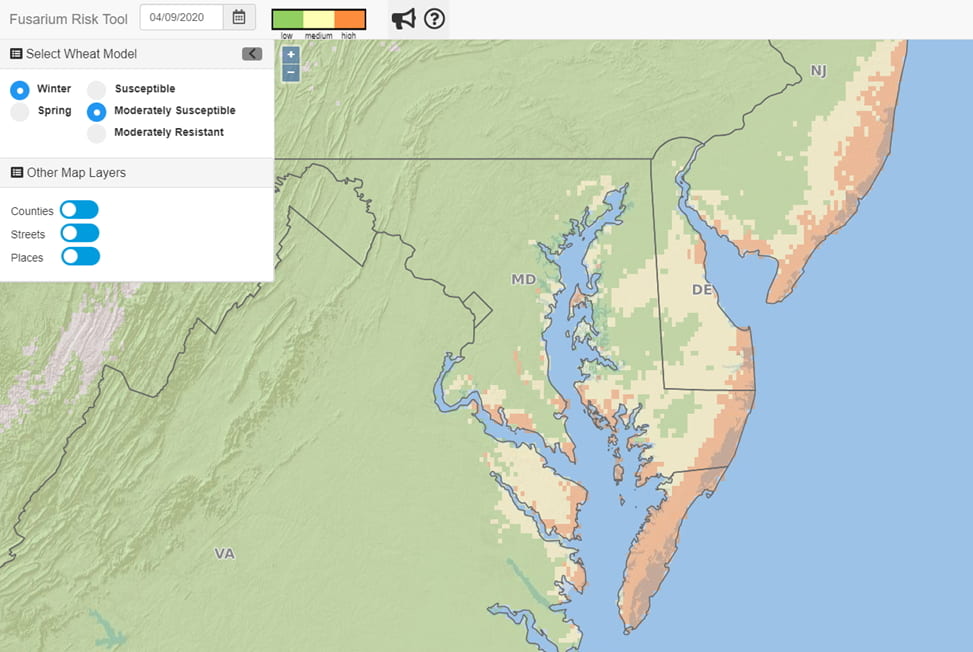Alyssa Koehler, Extension Field Crops Pathologist; akoehler@udel.edu
The Fusarium Risk Tool http://www.wheatscab.psu.edu/ is now live for the season. There have been some updates to the system since last season. When you enter to the tool, you will see the risk based on the current date. There is a calendar icon that allows you to look back in time by selecting a different day of interest. There is also now a menu icon in the upper left corner that allows users to customize the model predictions to account for using wheat varieties with different levels of genetic susceptibility to Fusarium head blight (Figure 1). The Fusarium Risk Tool can be used to help make decisions about whether to apply a fungicide. Currently most of the state is at medium risk with some high risk areas right along the coast. High humidity, heavy dew, rain, and night temperatures above 50°F favor FHB infection. In some areas, barley is already heading out so decisions to apply fungicides are quickly approaching for barley and wheat. In barley, flowering begins just before the spike emerges from the boot. While florets are not as susceptible, FHB can infect the glumes and produce DON. DON accumulation is the primary concern, especially for malting barley acreage. The optimum stage to apply fungicide for protection of barley glumes from FHB is when the spike is fully emerged from the boot and florets are exposed. The appearance of the first spikelet from the boot is a good indication that the window to apply a fungicide is close. Since wheat flowers once it has completely headed, 10.5.1, when yellow anthers are visible in the center of the spike, is the ideal time to apply fungicides to wheat.
Figure 1: Fusarium Risk Tool model for DelMarVa on April 9, 2020. The menu in the upper left corner allows for customization of genetic susceptibility to FHB. http://www.wheatscab.psu.edu/

